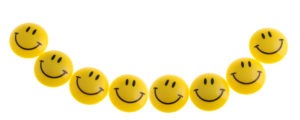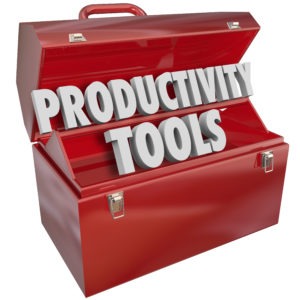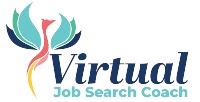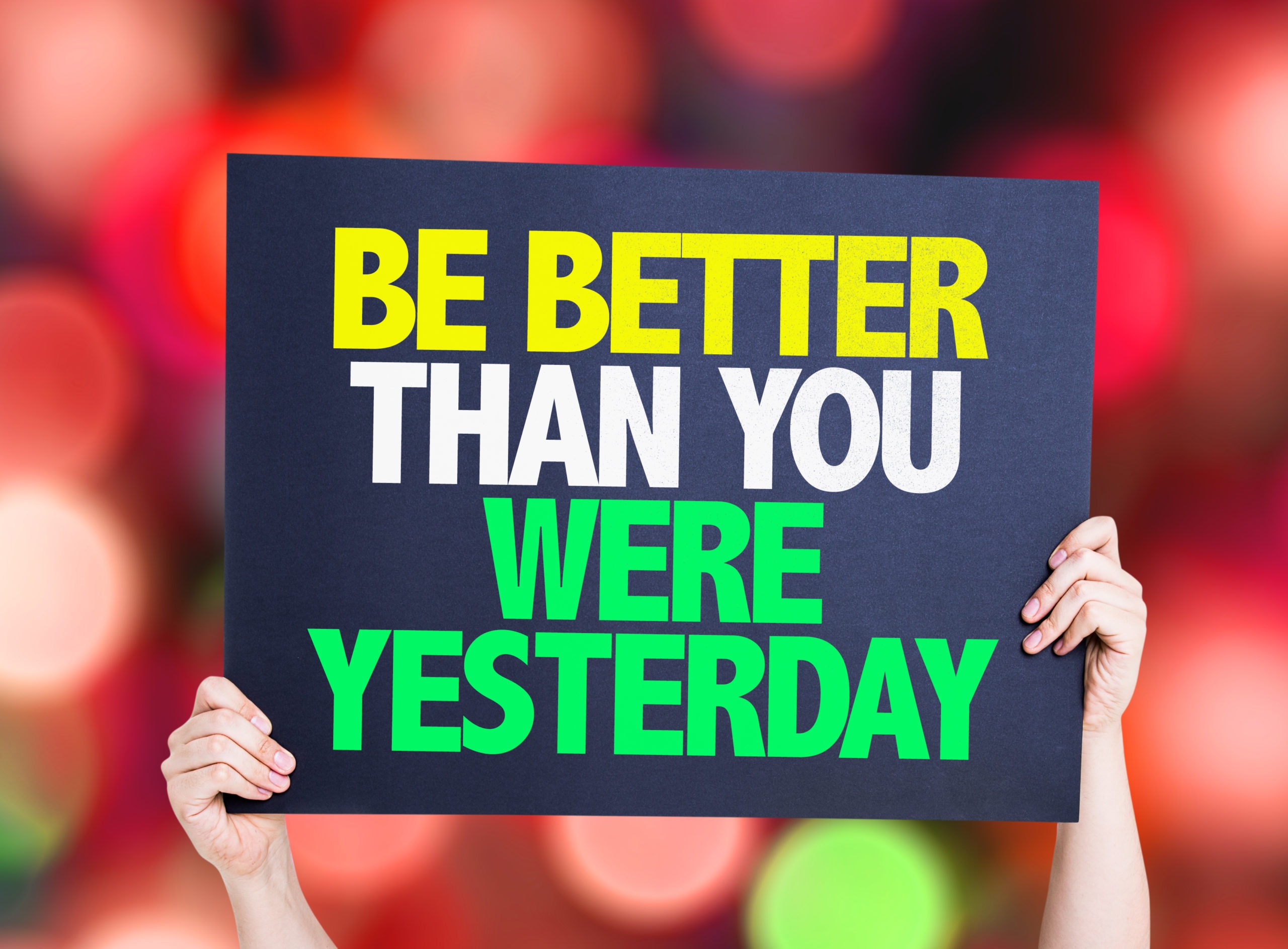This is part 2 on how to improve your productivity at work or how to be more productive in life in general. I’m going to give you another 12 strategies to incorporate into your daily routines to boost your productivity and help you decrease your stress.
Many of today’s productivity tips are centered around how to improve your wellbeing because productivity is not just about input, it’s about quality. Quality of work and quality of life. A stressed-out employee is not a productive employee or a happy one right?
Maybe you had a recent job performance review and it was brought to your attention that your efficiency or focus was not up to expectations and your productivity in the workplace needs improvement. Or maybe you just don’t feel as organized and efficient as you would like to be and don’t know how to improve your productivity.
In part 1, I gave you 12 workplace productivity tips to improve productivity and time management through specific actions you can implement at work to create a productive routine with examples of practical tools to help you quickly improve workflow process. I also suggested ways to improve productivity at work by helping you become more organized, efficient, increase your productivity, and lower your stress all at the same time.
Here are another 12 of my favourite tips, strategies, and habits you can incorporate to become more productive at work and at home.
STRATEGY #13 – MANAGE YOUR ENERGY
Having the right mental state will ensure productivity at work. In order to be physically and mentally ready for a full day of work, you need to have the energy to face the challenges that come your way. Here are some great habits to give you more energy.
- Eat healthy food to boost your brainpower and avoid energy crashes.
- Avoid junk food, I KNOW, it’s easier said than done, it’s hard to resist that savoury bag of Cheese puff or the heavenly taste of melted milk chocolate and caramel for that afternoon pick me up, hey it’s ok once in a while, but make sure that you maintain a balanced diet.
- Regular exercise will keep you alert and energetic every day. One of my closest friends started a new full-time job this year which greatly reduced her exercise and social time, so what she started doing was going on 15-minute walk on her lunch break every day and often calls a friend to catch up on her social life at the same time.
- Exercise also reduces stress hormones and promotes growth factors in the brain required for new neural connections.
- Listen to your body’s needs. For example, if you need protein every morning to be ready for work, then make sure that you have it.
- Ensure that you make the most out of your mornings. It’s the time of day when you have the most energy and when you are most focused. Schedule the tasks that require more mental energy during this period.
 STRATEGY #14 – HAVE A GOOD NIGHT’S REST
STRATEGY #14 – HAVE A GOOD NIGHT’S REST
Nothing beats a good night’s sleep. It can be tempting to sacrifice sleep in order to reach your goals and complete your tasks. This might work for you in the short term. After all, you’re spending more time accomplishing things. However, in the long term, the lack of sleep will catch up with you. Sleepless nights often lead to inability to concentrate, impaired working memory and logical reasoning, higher stress levels, not to mention physical fatigue, anxiety, and depression. Poor sleep has a host of adverse health effects both physically and mentally. If you are not healthy, then you are most likely not productive. Make sure that you get seven to nine hours of sleep every night.
STRATEGY #15 – RELIEVE STRESS
Did you know the leading cause of stress for North American adults are pressures and fears related to their work? When stress is managed wisely and used to motivate you, it can be good for productivity. Your goal should be to combat burnout before it occurs.
Here are some ways for you to help you relieve excessive stress.
Prioritize your physical, emotional, and mental health. This also means that you should ensure that your company culture is healthy. If it’s not and you aren’t in a position to encourage positive change then it may be time to consider a new workplace. If you are a team leader you can encourage and develop a positive culture by ensuring that there is an open dialogue between you and the rest of your team members. Change takes time but it’s never too late to start.
Adopt a stress relief routine that includes regular movement. For example, as you heard me mention earlier, step outside for a walk after or during your lunch period, or go for a quick walk on your coffee break. Get fresh air whenever possible but if the weather doesn’t allow you to get outside find a quiet place, an empty office or boardroom, or if you have no alternatives a washroom or staff cafeteria works too. Download a 5 or 7-minute workout to your cell phone or tablet – there are lots of great videos on youtube with 5-minute workouts, walking-in-place videos, or try something new like tai chi for beginners.
Learning something new is good for your brain and movement is good for your body. Hey and if you feel so inclined start a lunchtime 7-minute workout routine and invite some colleagues to join you. It might turn into a great way to build friendships, improve teamwork, have fun and get or stay fit at work.
STRATEGY #16 – STAND MORE
This is a great one for those of you that sit on a chair most of your working day. Although standing at your desk doesn’t necessarily burn more calories than if you’re sitting. Standing up more does help reduce your risk of developing certain health conditions such as shoulder and back pain, heart disease, obesity, cancer, and premature death. If it’s feasible, ask your supervisor or company wellness committee to consider investing in standing desks for team members who are interested in them.

Another way to stand more is by holding standing meetings – this works great for shorter meetings – just make sure you have a preset agenda and the attendees know ahead of time that it’s a standing meeting. Standing meetings also promote productivity because most people who are used to sitting, don’t want to spend a long time standing so it will help the group stay focused and on task to get through the agenda more efficiently. Try it for your next meeting and let me know how it goes.
STRATEGY #17 – TAKE BREAKS
Back in my management days working in the corporate world, I was really bad about skipping breaks and it wasn’t until much later that I realized how much of a negative impact it had on me both mentally and physically. Breaks are important regardless of the position you hold and no matter what organization or industry you belong to. Taking breaks is a vital part of the creative process of getting things done. Even a few minutes to walk around chatting with a colleague, go to the restroom, or get some coffee can do wonders for your productivity.
Breaks give your brain some time to rest so that you can focus better when you return to your desk and your pending tasks. Lunch breaks in particular should always be a part of your day. An excessive workload can result in sustained stress, burnout, and inefficiencies. Lunch breaks can serve as a Mental Cleanse where you can rest, recharge and reset so that you can be just as productive in the afternoon.
STRATEGY #18 – BE OPTIMISTIC
happy people are more productive. A 2019 Oxford University research study found that workers are 13% more productive when happy, while another study through the University of Warwick found that happy Employees were up to 20% more productive than unhappy employees. Make sure that you cultivate optimism around you in your workplace. Negativity should have no place at work. So instead of focusing on the negatives learn to see opportunities in tough and challenging situations. Remember, you can’t control the attitudes, reactions or behaviours of others, but you do have the power to control your own.
As American Poet and Civil Rights Activist Maya Angelou once said, “If you don’t like something, change it. If you can’t change it, change your attitude. Don’t complain.”
STRATEGY #19 – FOSTER A HEALTHY WORK-LIFE BALANCE
Every person’s needs, perspectives, and job are different and so are the needs and expectations of their colleagues, employees, or line of business. So what a work-life balance is for you may be completely different from what it looks like for someone else. Find a good balance that works for you and your organization. For example, you may realize that you’re more productive when you spend less time in the office.
If you operate strictly on a standard nine to five schedule, or in a role where you don’t have the authority to manage your own time on your terms, talk to your supervisor about other ways to accommodate your personal needs. Furthermore, make sure that there is an open system of communication in the office between you, your boss, and your team.
STRATEGY #20 – USE THE TWO MINUTE RULE
Many people interpret this rule as completing any task within 2 minutes or focusing immediately on tasks that require two minutes or less. The two-minute rule can actually kill your productivity if you take it at face value and don’t implement it correctly. To use the two-minute rule properly create a to-do list that includes all your tasks and activities for the day. When you are creating this list, you’ll realize that there are certain small tasks that seem like they can be done in a couple of minutes. Do them as soon as you can. However, make sure to come back to your list and finish it. Don’t get bogged down in these small tasks and let them stop you from getting the more crucial tasks done for the day.
STRATEGY #21 – PROCRASTINATE PRODUCTIVELY
Raise your hand if you’ve never heard that before! Procrastination isn’t all that bad, especially when you’re using that time to clean up, complete some of the smaller tasks on your to-do list, or even take a quick break to rest and reset. These things can reset your mind give you more energy and reinvigorate your productivity. You can also use procrastination productively by thinking about why you’re putting off the task. Some people will try and put off tasks because they’re perfectionists and would rather not do it instead of doing it poorly. Other people may find some thrill in being able to finish a task (whew!) just in the nick of time.
STRATEGY #22 – EQUIP YOURSELF WITH THE RIGHT TOOLS
As much as it’s important to have the right skills for the job, having the right tools plays a significant role in overall performance. Choose the right set of tools to make your work easier and create a streamlined workflow. And I touched on this a little in strategy #11 in part 1 of this series.
Here are some examples of tools that can simplify your work:
- Time and productivity tracking apps make it easier to monitor your hours and productivity with activity rates and can enhance workplace efficiency.
- Collaboration apps promote and streamline teamwork. Being able to work together in real-time can do wonders for team chemistry, and also allows the free and natural flow of ideas.
- Communication apps do a terrific job of keeping conversations organized and messages easier to keep track of.
STRATEGY # 23 – EFFICIENCY VERSUS PRODUCTIVITY
This is actually more of a definition than a strategy but I think it’s important to understand the difference between productivity and efficiency especially if it’s ever bought up as a concern in your work performance review. Efficiency involves doing the same tasks with less resources. Essentially improving efficiency entails streamlining. Productivity is fundamentally tied to performance. Productivity involves doing MORE with the SAME amount of resources. Unlike efficiency, an improvement in productivity consequently increases the output of a certain product or service.
STRATEGY #24 – PLAN FOR THE UNPLANNED
In every workplace, team, and organization, nothing is absolutely certain. Estimating time and durations isn’t always accurate, even with the best tools at hand. Although tracking time will help you determine how and where your time is spent. Productivity is a product of working efficiently as much as it is a product of delivering results given a fixed amount of capacity. To ensure productivity, manage expectations well. Don’t over-commit because the work will continue to pile up and you’ll feel rushed to meet deadlines and will most likely make a bunch of careless mistakes. Ensure that you have enough time to allow for unexpected commitments and tasks.
And here’s my bonus tip in the form of one of my favourite quotes by Canadian Inspirational Author Catherine Pulsifer, “No action, no change. Limited action, limited change. Lots of action, change occurs.
I hope these tips and strategies will help you create changes to be more productive in your work and home life.
Please share this article with someone you know who might benefit from it, and remember to subscribe to my YouTube channel (VirtualJobSearchCoach), for great videos on topics related to job search strategies, interview tips, and thriving in your career.
If you would like one-to-one coaching to equip you with the confidence, necessary tools, critical knowledge, and strategies to find and land your ideal job – then let’s talk! You can book a complimentary 15 minute discover call directly in my calendar at https://calendly.com/virtualstacey and let’s chat about how I can help you fast-track your job search success.


